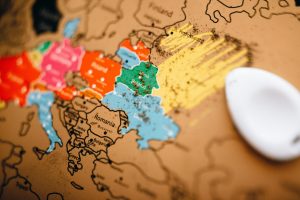Building a Personal Learning Ecosystem with Microcredentials
Welcome to the world of personal learning ecosystems! In today’s fast-paced and ever-changing world, traditional modes of education are no longer enough to keep up with the rapid advancements in technology and industry. This is where microcredentials come in – short, targeted courses that equip individuals with specific skills and knowledge in specific areas. And when combined with a personal learning ecosystem, these microcredentials can help individuals continuously develop and grow in their chosen fields. Let’s take a closer look at how microcredentials can be used to build a personalized learning ecosystem.
What is a Personal Learning Ecosystem?
A personal learning ecosystem (PLE) is a self-directed and dynamic system for acquiring and managing knowledge and skills. It is unique to each individual, as it is tailored to their specific learning goals and preferences. It goes beyond traditional formal education, incorporating both formal and informal learning experiences. A PLE can include a variety of resources such as books, articles, online courses, podcasts, webinars, and more. With a PLE, the learner takes control of their learning journey and creates a customized environment that works best for them.
Why Microcredentials?
Microcredentials, also known as digital badges, are short and focused courses that validate a person’s skills and knowledge in a specific area. They are designed to be practical and applicable to real-world situations, making them ideal for building a personal learning ecosystem. Traditional education often involves long-term commitments, where individuals have to study irrelevant materials and take on courses that do not align with their career goals. With microcredentials, learners have the option to choose only the courses that are relevant to their interests and goals, making the learning experience more efficient and effective.
How to Build a Personal Learning Ecosystem with Microcredentials
1. Identify Your Learning Goals
The first step in building a PLE with microcredentials is to identify your learning goals. What skills and knowledge do you want to acquire? Which industries or fields do you want to develop expertise in? Once you have a clear idea of your learning goals, you can start searching for microcredentials that match those goals.
2. Select Microcredentials Based on Your Goals
As mentioned earlier, microcredentials are short and targeted courses, making them easier to find and select based on your goals. Look for courses offered by reputable institutions or organizations that align with your learning goals. Consider the course content, length, and delivery format to ensure that it meets your needs and preferences.
3. Incorporate Informal Learning Experiences
A PLE is not limited to formal education. In fact, informal learning experiences can be just as valuable and beneficial in building a comprehensive knowledge base. This can include networking with professionals in your field, attending conferences or workshops, listening to podcasts, or participating in online forums or discussions. These informal learning experiences can provide practical insights and hands-on experience that traditional education may not offer.
4. Organize and Track Your Microcredentials
To effectively manage your personal learning ecosystem, it is essential to organize and track your microcredentials. This can involve creating a digital portfolio or online resume that showcases your skills and achievements. You can also use online tools or apps to keep track of your progress and remind you of upcoming courses or events. A well-organized system will help you stay on top of your learning goals and ensure that you do not miss any opportunities to upskill.
5. Continuously Evaluate and Adapt
A PLE is a dynamic system, and as such, it should be continuously evaluated and adapted as needed. As you acquire new microcredentials and gain more experience, your learning goals may change, and new opportunities may arise. It is crucial to periodically review your PLE and make adjustments to ensure that it remains relevant to your career development.
In Conclusion
The traditional concept of education is evolving, and personal learning ecosystems are becoming more prevalent as individuals take control of their learning journey. With the help of microcredentials, individuals can build a personalized and efficient system for continuous learning and growth. By identifying learning goals, selecting relevant microcredentials, incorporating informal learning experiences, organizing and tracking achievements, and continuously evaluating and adapting, individuals can create a dynamic PLE that supports their personal and professional development. So why not start building your personal learning ecosystem today? The possibilities are endless!









